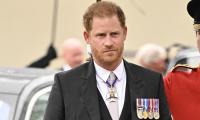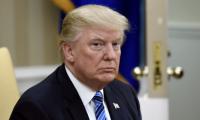LAHORE: Massive bloodbath during the 1947 partition and the territorial conflicts had quickly eclipsed the Pak-India relation, including the two-way trade. In 1948, Pakistan’s trade was anchored in the region with reliance on India for 56 per cent exports and 32 per cent imports.
Dozens of Pakistani and Indian business delegations have toured each other’s country, particularly since the 1999 Lahore visit of the then Indian Premier Vajpayee, but despite concerted efforts by the business chambers and trade associations of the two countries to enhance the dismal bilateral trade volume, the two countries have not been able to segregate business from politics.
Research shows that during the 1965 War, Pakistani Customs officials at Wagah border were taken as the first civilian Prisoners of War (PoWs), and the bilateral trade was suspended.
Trade activities resumed seven years later under the 1972 Simla Agreement. A few years ago, an eminent Pakistani media house had stated: “From 1972 to 1995, both the countries traded on the basis of restrictive positive lists. With the advent of the WTO in 1995, India granted Pakistan the Most Favoured Nation (MFN) status, while Pakistan continued with a positive list that gradually expanded from 328 items in 1995 to around 2,000 items in 2012. The positive list regime was liberalized in 2012 to a negative list of 1,209 items, which boosted Indian exports by 34% in two years. Despite India granting the status of MFN to Pakistan, Pakistani exporters have faced an impregnable wall of overt and covert non-tariff barriers. So effective were the barriers that Pakistan’s “favoured” exports could never exceed $0.4 billion in an Indian import market of more than $500 billion, while Indian “unfavoured” exports claimed a $2 billion share in Pakistan’s annual imports of $60 billion.”
From 2005 to 2019, Pakistan’s exports had remained stuck at $350-400 million, but Indian exports increased more than three-fold from $577 million in 2005 to $1.9 billion.
The suspended Pak-India trade in August 2019 had particularly left the Pakistani pharmaceutical industry in quite a quandary, as this sector used to import organic chemicals worth $362 million for both textile and pharma sector.
Following the embargo, the Pakistani pharmaceutical industry had to import the same product from China. Similarly, prior to the August 2019 ban, Pakistan used to buy Indian cotton and yarn, worth about $8 million.
But the local textile tycoons had found other buying markets in Central Asian States and Egypt. Pakistan also used to buy Indian plastic and other items for $129 million, but later resorted to the Chinese market to fulfil its needs.
The other Indian products that Pakistani businessmen used to buy from India included machinery and boilers ($117 million), and pigments and dyes for textile industry ($117 million). In one of his articles on September 16, 2020, renowned Pakistani industrialist, Dr. Kamal Monnoo, had written: “The stalling of trade between Pakistan and India since August 2019 is adversely affecting the local population on both sides of the border, as they have lost work and jobs in the process, hence escalating the poverty levels.”
Justice Tariq Mehmood Jahangiri took up Sher Afzal bail plea for hearing
CCP’s announcement made, stating that applicants are required to pay money upfront in order to enroll
According to details, the police took a van filled with female students of medical college to a police station on...
In this image, the logo of the Nowshera Press Club can be seen. — Facebook/Nowshera Press Club/FileNOWSHERA: The...
Senator Sherry Rehman said the PPP had previously extended an offer to the PTI to form a government, but the PTI is...
A division bench comprising Justice Shakeel Ahmad and Justice Dr Khurshid Iqbal heard the petition filed by the KP...







